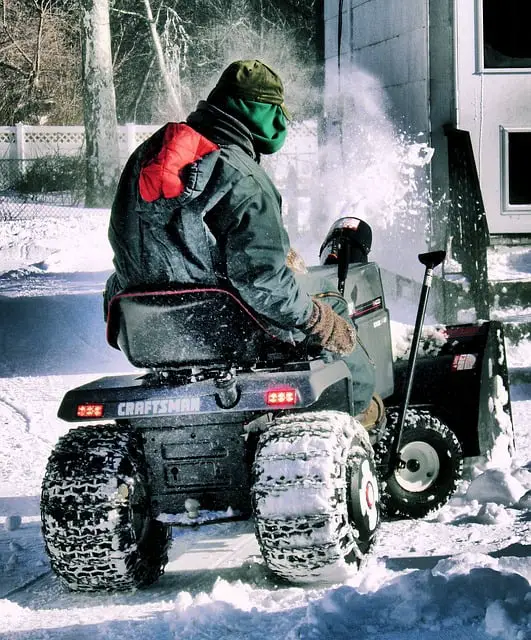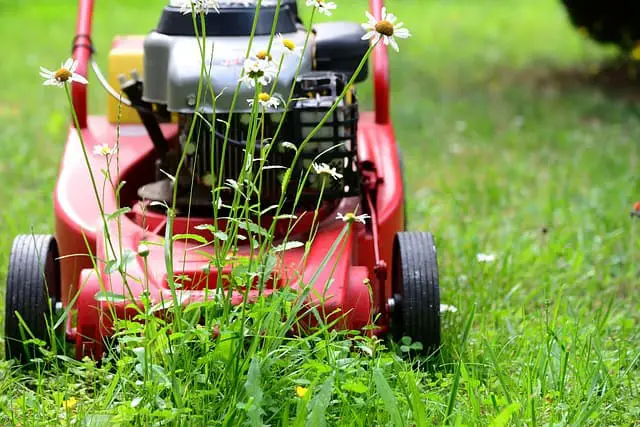A snowblower can be made more powerful by making necessary adjustments to its parts such as the snowblower’s wheels, tracks or skid shoes. Regular maintenance of the snowblower through lubrication, replacement of worn out parts and proper storage also ensures your snowblower will be able to last for decades in a good condition.
Read below to know more about the various methods of lubrication, cleaning, adjustments and replacements you can utilize in order to optimize the performance of your snowblower.
What Makes a Snowblower More Powerful?
By a ‘powerful’ snowblower, we mean the snowblower is able to throw snow at a large distance. The various variables affecting this throwing distance include the impeller’s rpm, the type of blower (such as single-stage or two-stage snowblowers), the depth of snow, and so on.
How To Make Single-Stage Snowblowers More Powerful?
Single-stage snowblowers are ‘weaker’ than two-stage snowblowers in the sense that they lack an impeller. The impeller is a fan that projects the snow outside and increases the throwing distance of the snowblower by reducing the distance between the auger and chute. You can make your single-stage snowblower more powerful by installing an impeller into it through an impeller kit.
Are Impeller Kits Suitable for Two-Stage Snowblowers?
Yes! Basically, you can replace the impeller of your two-stage blower with another one that is of a larger diameter. A larger impeller increases the distance at which the snowblower throws snow, so it’s a good idea to consider modifying the impeller of your snowblower if you find it’s not working as powerfully as before.
Can You Install an Impeller Kit Yourself?
You can buy a DIY Impeller Kit and install it on your snowblower yourself, but this requires a lot of technical skill and detail. As a beginner you may not be sure if the impeller kit is even suitable for your snowblower’s model, so it’s best to consider getting an impeller installed through a professional.
Should I Just Buy a More Powerful Snowblower?
It depends on the type of snow you’re clearing. There are single-stage, two-stage and three-stage snowblowers, but all are designed for different scenarios. If you want to clear light, powdery snow, a single-stage snowblower will be able to carry out the job, but for anything wet and heavy you might want to consider replacing your single-stage snowblower with a two-stage or three-stage one.
How Does Lubricating the Chute Make The Snowblower More Powerful?
The chute might get clogged as a result of wet, heavy snow build-up, which might be one of the contributing factors in your snowblower not being as powerful as before. To prevent this from happening, maintain the chute through regular lubrication.
With What Can You Lubricate The Snowblower’s Chute?
Many people like to adopt a DIY way and use household lubricants such as cooking oil or cooking spray. A better way to go about it is to use non-stick spray since it won’t be as messy or greasy. The spray creates a protective coating on the chute to keep it from dust, dirt, snow and grass.
How Often Should You Lubricate The Chute?
It would suffice to lubricate the chute at least once every season. You might want to lubricate twice every month depending on the frequency of the snowblower’s usage, but avoid overdoing it.
Can You Make the Snowblower More Powerful By Increasing the Speed?
Simply increasing the speed of the snowblower can increase its power and prevent its components from getting clogged. A higher snowblower speed ensures that the auger will project out the snow with more force, preventing it from building up on the surface of the auger.
How Does Adjusting the Wheels Affects the Snowblower’s Power?
A snowblower works more powerfully if its being driven in a straight line. A lack of balance between the wheels would make the snowblower ‘limp’ on one hand, reducing its power to an extent. Make sure the tires of the snowblower are not underinflated and if they are, inflate them to equal pressures.
How Does Adjusting the Tracks Affects the Snowblower’s Power?
The tension between the left and right tracks of the snowblower needs to be balanced, otherwise the snowblower’s body will pull towards one side as you drive it, marring the snowblower’s power. To balance the tension, tighten the left track adjuster if your snowblower is limping towards the right, and tighten the right track adjuster if your snowblower is limping towards the left.
How Does Adjusting the Snowblower’s Clearing Height Affect its Power?
Depending on whether you’re driving your snowblower through a paved surface or a surface with loose, wet material such as gravel, you might want to adjust the snowblower’s height through the skid shoes.
If you’re driving on a graveled road, increase the height so the gravel doesn’t stick to the snowblower’s components and if you’re driving on a paved road, decrease the height for better power.
Avoid Damaging the Auger of The Snowblower
Make sure you’re using your snowblower on a surface that is free of problematic objects such as toys, glass shards, rocks etc. that might cause damage to the snowblower’s auger and reduce its power.
Cleaning the Snowblower Regularly to Maintain its Power
Contemporary snowblower designs come with attachments that have cleaning tools – you basically use them to wipe off any dirt, snow or residue that may get stuck in the auger housing. Regular cleaning ensures the auger remains unclogged which will maintain the power of the snowblower.
Can You Clean the Auger Without a Tool?
It’s recommended to not clean the auger without a tool. The auger is a moving part, which stops rotating when it gets clogged. If you wipe dirt and residue off it using bare hands, chances are the auger will start moving again suddenly which can severely hurt your fingers and cause injuries.
Does a Broken Shear Pin Affect the Power of the Snowblower?
The snowblower may stop working if the shear pin gets broken, even if the auger isn’t that clogged. The engine would still be running but the auger will stop working, eliminating the snowblower’s power. Luckily, shear pins are cheap and easy to replace, so you can easily resolve this issue.


